
The Algonquin people are an Indigenous people who now live in Eastern Canada. They speak the Algonquin language, which is part of the Algonquian language family. Culturally and linguistically, they are closely related to the Odawa, Potawatomi, Ojibwe, Mississaugas, and Nipissing, with whom they form the larger Anicinàpe (Anishinaabeg). Algonquins call themselves Omàmiwinini or the more generalised name of Anicinàpe.

The Beaver Wars, also known as the Iroquois Wars or the French and Iroquois Wars were a series of conflicts fought intermittently during the 17th century in North America throughout the Saint Lawrence River valley in Canada and the Great Lakes region which pitted the Iroquois against the Hurons, northern Algonquians and their French allies. As a result of this conflict, the Iroquois destroyed several confederacies and tribes through warfare: the Hurons or Wendat, Erie, Neutral, Wenro, Petun, Susquehannock, Mohican and northern Algonquins whom they defeated and dispersed, some fleeing to neighbouring peoples and others assimilated, routed, or killed.

This section of the Timeline of Quebec history concerns the events between the foundation of Quebec and establishment of the Sovereign Council.

Jean de Quen was a French Jesuit missionary, priest and historian. As head of Jesuit missions of New France, he founded the missions to Saguenay. In 1647, Jean de Quen was the first European to reach the shores of Piékouagami.

Charles Jacques Huault de Montmagny was governor of New France from 1636 to 1648. He was the first person to bear the title of Governor of New France and succeeded Samuel de Champlain, who governed the colony as Lieutenant General of New France. Montmagny was able to negotiate a peace treaty with the Iroquois at Trois-Rivières in 1645.

Tessouat was an Algonquin chief from the Kitchesipirini nation. His nation lived in an area extending from Lake of Two Mountains to modern-day Pembroke, Ontario.
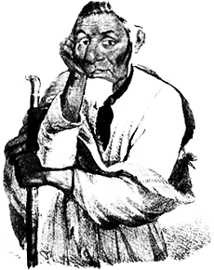
Nicolas Perrot, a French explorer, fur trader, and diplomat, was one of the first European men to travel in the Upper Mississippi Valley, in what is now Wisconsin and Minnesota.
Jacques Buteux was a French-born Jesuit who became a missionary in Canada.

Guillaume Couture was a citizen of New France. During his life he was a lay missionary with the Jesuits, a survivor of torture, a member of an Iroquois council, a translator, a diplomat, a militia captain, and a lay leader among the colonists of the Pointe-Lévy in the Seigneury of Lauzon, a district of New France located on the South Side of Quebec City.
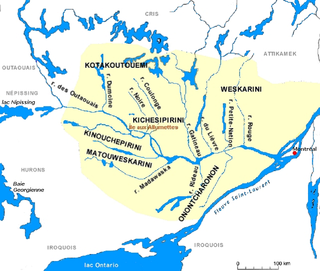
The Kichesipirini were an Algonquin First Nations in Canada based near the Ottawa River in Quebec.
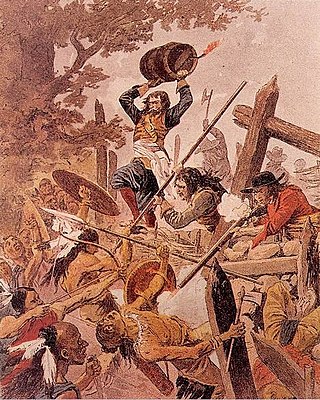
The Battle of Long Sault occurred over a five-day period in early May 1660 during the Beaver Wars. It was fought between French colonial militia, with their Huron and Algonquin allies, against the Iroquois Confederacy.

The Lachine massacre, part of the Beaver Wars, occurred when 1,500 Mohawk warriors launched a surprise attack against the small settlement of Lachine, New France, at the upper end of Montreal Island, on the morning of 5 August 1689.

The Iroquois, also known as the Five Nations or the Six Nations and by the endonym Haudenosaunee, are an Iroquoian-speaking confederacy of Native Americans and First Nations peoples in northeast North America and Upstate New York. They were known during the colonial years to the French as the "Iroquois League", and later as the "Iroquois Confederacy". The English called them the "Five Nations", including the Mohawk, Oneida, Onondaga, Cayuga, and Seneca. After 1722, the Iroquoian-speaking Tuscarora from the southeast were accepted into the confederacy, which became known as the Six Nations.

Jesuit missions in North America were attempted in the late 16th century, established early in the 17th century, faltered at the beginning of the 18th, disappeared during the suppression of the Society of Jesus around 1763, and returned around 1830 after the restoration of the Society. The missions were established as part of the colonial drive of France and Spain during the period, the "saving of souls" being an accompaniment of the constitution of Nouvelle-France and early New Spain. The efforts of the Jesuits in North America were paralleled by their China missions on the other side of the world, and in South America. They left written documentation of their efforts, in the form of The Jesuit Relations.
Canaqueese was a Mohawk war leader and intercultural mediator who lived in the 17th century in the Mohawk Valley in what is now New York State. He was of mixed race, with a Mohawk mother and a Dutch father, but brought up and identifying as Mohawk. He was an important intermediary between the French, the Dutch, the Algonquian speaking Mahican (Mohican), and the Iroquoian speaking Mohawk. This was especially so during the Beaver Wars, which arose over competition for the lucrative fur trade. He participated in numerous attempts to reach a peace agreement between the Mohawk and the French based in New France and always acted to protect the interests of the Mohawk.
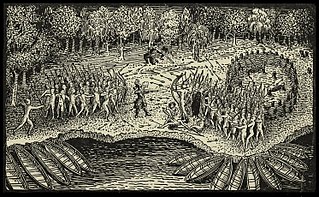
During the summer of 1609, Samuel de Champlain attempted to form better relations with the local native tribes. He made alliances with the Wendat and with the Algonquin, the Montagnais, and the Etchemin, who lived in the area of the St. Lawrence River. These tribes demanded that Champlain help them in their war against the Iroquois, who lived further south. Champlain set off with 9 French soldiers and 300 natives to explore the Rivière des Iroquois, and became the first European to map Lake Champlain. Having had no encounters with the Iroquois at this point many of the men headed back because of the danger of traveling in the country of their enemies, leaving Champlain with only 2 Frenchmen and 60 natives.

The Battle of Sorel occurred on June 19, 1610, with Samuel de Champlain supported by the Kingdom of France and his allies, the Huron, Algonquin people, and Montagnais that fought against the Mohawk people in New France at present-day Sorel-Tracy, Quebec. The forces of Champlain armed with the arquebus engaged and killed or captured nearly all of the Mohawks. The battle ended major hostilities with the Mohawks for twenty years.
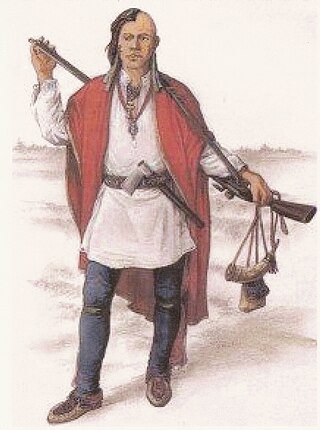
The military history of the Mi'kmaq consisted primarily of Mi'kmaq warriors (smáknisk) who participated in wars against the English independently as well as in coordination with the Acadian militia and French royal forces. The Mi'kmaq militias remained an effective force for over 75 years before the Halifax Treaties were signed (1760–1761). In the nineteenth century, the Mi'kmaq "boasted" that, in their contest with the British, the Mi'kmaq "killed more men than they lost". In 1753, Charles Morris stated that the Mi'kmaq have the advantage of "no settlement or place of abode, but wandering from place to place in unknown and, therefore, inaccessible woods, is so great that it has hitherto rendered all attempts to surprise them ineffectual". Leadership on both sides of the conflict employed standard colonial warfare, which included scalping non-combatants. After some engagements against the British during the American Revolutionary War, the militias were dormant throughout the nineteenth century, while the Mi'kmaq people used diplomatic efforts to have the local authorities honour the treaties. After confederation, Mi'kmaq warriors eventually joined Canada's war efforts in World War I and World War II. The most well-known colonial leaders of these militias were Chief (Sakamaw) Jean-Baptiste Cope and Chief Étienne Bâtard.

The Maliseet militia was made up of warriors from the Maliseet of northeastern North America. Along with the Wabanaki Confederacy, the French and Acadian militia, the Maliseet fought the British through six wars over a period of 75 years. They also mobilized against the British in the American Revolution. After confederation, Maliseet warriors eventually joined Canada's war efforts in World War I and World War II.
A Dish With One Spoon, also known as One Dish One Spoon, is a law used by Indigenous peoples of the Americas since at least 1142 CE to describe an agreement for sharing hunting territory among two or more nations. People are all eating out of the single dish, that is, all hunting in the shared territory. One spoon signifies that all Peoples sharing the territory are expected to limit the game they take to leave enough for others, and for the continued abundance and viability of the hunting grounds into the future. Sometimes the Indigenous language word is rendered in English as bowl or kettle rather than dish.














